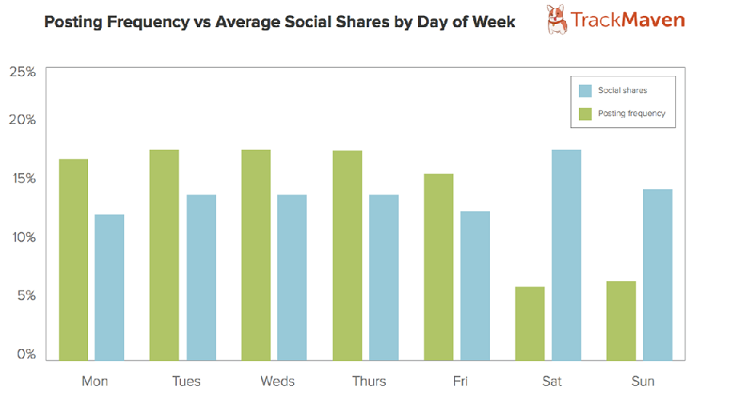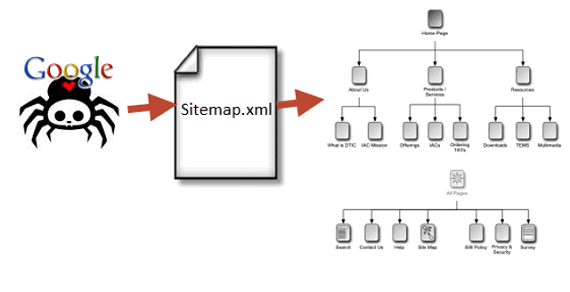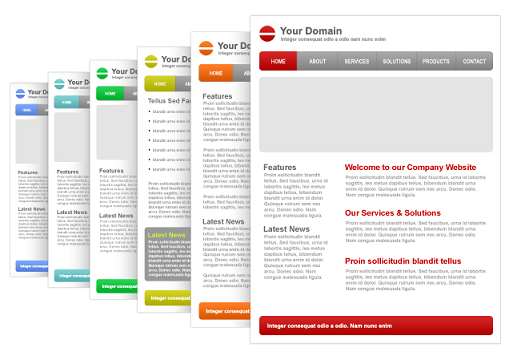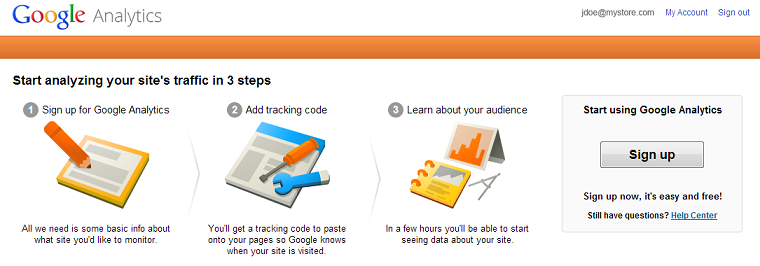Blogging is a key strategy to improve your website’s search engine optimization (SEO), and the two concepts (blogs and SEO) are becoming more and more linked. Why is that?
Google bot crawls the Internet to find and index new pages.
So, when the Googlebot finds new quality content — and yes, it has to be quality content — it processes the words in the web page and adds them to Google’s Searchable Index. The Searchable Index is what pops up when we search something in Google.
If your website has new blogs posts, you are essentially adding more to the Google search pages, making it easier for people to find your website. Simple as that!
Did you know? Companies that blog have 434% more indexed pages. And companies with more indexed pages get far more leads.
Blogging really pays off!
The trick is, you want Google to find your content fast and categorize it correctly. There are ways you can do that which we will talk about later in the blog.
The fact is that 81% of businesses consider their blogs to be an important asset to their businesses, which means blogging is important — but also that many companies are blogging. You need to stand out and drive more traffic to your website.
You are taking the time to write the blog, which is great since 329 million people read blogs, but you need to make sure you are driving traffic to these posts. Because what is the point of writing if no one sees them?
In this post, we’ll take you through:
– Best Blogging Practices — Make sure you’re doing it right!
– How to Measure your Blog Traffic — See how many viewers you have
– 10 Strategies to drive more traffic to your blog — Increase your viewers
After this, you’ll be a blogging expert and have much more traffic coming to your site. And if you have more of the right traffic going to your website, then this will increase your leads.
Contents
Best Blogging Practices — Make sure you’re doing it right!
Now that you have a blog, you should be sure you are utilizing best practices so that you get repeat visitors. Ideally you want people to follow your blog and keep coming back to see what content you post.
There are blogging best practices that change over the years, so it’s important to keep up with trends that users follow. There are 5 items you should keep in mind every time you go to write a blog:
1. Fresh Content
2. Style
3. Timing
4. Credibility
5. Frequency
With these 5 tactics, your blogs will create continuous followers and online buzz.
1. Fresh Content

When it comes to writing a stellar blog series, you must write fresh content — content that doesn’t already exist on the web. We want new things – new and unique take on trends and commentary that we haven’t heard already.
The best way to do this is first think about your target market:
– What sort of content do they read?
– What types of content do they digest (video, text, images, etc.)?
– Do they like product reviews, commentary, thoughtful pieces?
– How can you get them excited and engaged with content?
After you know that, you will understand what type of content to create. Remember that you want the content to be as new as possible. So if a new Google Update comes out, make sure to write about it as soon as possible.

Alternatively, prediction posts are very popular. Discussing upcoming trends in your industry and how your target market should prepare garner many clicks and shares.
Once you know the kind of content to write, you should think about the style.
2. Style
How you write your blogs is also important.
What do I mean by this?
If your target market is young, then you don’t want to write in a intensely formal style – you can relax it a bit. If you’re discussing a financial crisis, then you want to make your writing style more educative and formal.
Your content and audience will guide your writing style. And having a strong style will increase your readership.
We all prefer reading content that is seemingly written for us — or at least somewhat for us. We respond more and are more likely to comment and share this type of content.
Another type of style is how your blogs look. You should make sure to:
-Include videos
-Post images and Infographics
-Highlight statistics
These aspects are important part of the blog itself. Readers respond well to a well-designed blog that looks appealing to read. So it’s not just the content, it’s the look of the post as well.
Now that you have the content and look down, let’s talk about the timing elements of the blog.
3. Timing
If you write a blog, you need to make sure to post it at an appropriate time. If you post something at 3 am, most likely no one will even see it.
Again, like the points above, it’s key to think about what time your target market actually sits down and reads blogs (or maybe they read them on their commute in or commute home). All of this is key information to know.
When it comes to timing, you have to think about the time of day and day of the week.
For the most part, and this is not always true for each type of blog and each type of target, it’s best to post your blogs in the morning.

If you’re not a morning person, don’t worry! Using WordPress (or whichever blog hosting site you prefer), you can schedule blogs so they go up first thing in the morning.
If you’re posting one or more blog per week, take a look at when most people read during the week:

According to TrackMaven, blogs posted in the middle of the week (Tuesday through Thursday) get more views and social shares.
Thinking about those times it makes sense since Monday people are catching up from the weekend and Friday people are getting things done to start the weekend.
Now that you have all of your timing ready, you want to make sure your blog has authority.
4. Credibility
If you want to purchase a new computer and you have two machines to choose from, how do you decide? What is one computer has tons of awards and accolades?
That will most likely sway you towards purchasing that machine.
The same goes for blogging online. If your blog is more credible, then you’ll get more readership, which means you want to take steps to build your online credibility. Here are some ways to do it:
– Include social media share buttons on the blog (more shares = more cred online)
– Build up your social following (more followers on social media = more cred)
– Include links and quotes from industry influencers.
– Ask influencers to guest blog.
All of this goes into building your online authority. WIth a higher authority, you’re more likely to get more views. In addition to credibility, you want to follow through on blog frequency.
5. Frequency
This is pretty simple.
If you promise a weekly blog series, create a weekly blog series. You run the risk of annoying readers if you promise something and under deliver. For example, if your blog dissects all of Apple’s products, don’t miss a huge product launch.
You want readers to come to your site continuously looking for awesome new content. What you don’t want is for readers to get to your site and see only old posts — aka don’t leave them waiting for new content.

For most companies (and most people), a daily blog is sort of out of the question. That is more for journalists, whose full-time job it is to create daily fresh content.
It’s OK if your blog calendar only has new posts go up every other week.
The key takeaway is that:
Once you have a blog calendar, you need to stick to it!
Now that you have your content best practices, you should be posting your blogs. Measurement is really important, so let’s discuss the best way to analyze and track how well your blog is doing.
How to Measure Traffic of your Blog
Every time you write a blog, you are going to want to track it online to see how it did.
Did people read it, like it, share it? If you aren’t looking at those key measurements, then you have no way to edit your blog campaign to write better content.
Each time you blog, you really want to make sure you are tracking how well it does online, how many shares it gets on social, and how it impacts your analytics. What you want to do is this:
Setup a separate Google Analytics account for your blog. This way you can see overall how many visits your blog gets, how many unique visitors, where they’re from, etc. If you don’t know how to do this already, it’s incredibly easy.
Follow along Google’s instructions, wait 24 hours, and you’ll be able to see all the information you need.
For those who have already set up analytics, here is what you want to look out for:
– Users: How many people were on your blog in a given month (or week, however you want to measure)
– Bounce Rate: How quickly did they leave your page?
– Average Session Duration: How long do they spend on your blog?
That is the basic information that you’ll find on your analytics homepage. To find more information, like where people find your blog, click Acquisition.
There you can find out how they get to your blogs. By clicking All Traffic → Referrals, you can find out where people find you.
For example, people probably get to your blogs from Facebook, LinkedIn, Twitter, whatever social networks you post on regularly.
If you find no one clicks from Twitter, then you can change your campaign strategy or spend less time and resources there. If you find everyone comes from Facebook, you can pay to boost posts or continue to repost content since you know people are paying attention.
For more information on acquisition, take a look here:
If you have less traffic then you should first look to make sure you have great content. If your content is awesome, and you’re just not seeing a numbers bump, then there are a few other strategies you can use to get traffic up.
Some strategies are technical and some are more content based, but without further ado, here are 10 strategies that, when implemented, are guaranteed to boost traffic of your blog.
10. Create a Sitemap
First, what is a sitemap? It’s a list of pages of your website that crawlers (such as the Googlebot) have access to. This can be as simple as a web page that lists each page of your website, and you want to typically organize it by hierarchy.

Not every single website needs a sitemap, but Google recommends making one if you meet one of the following criteria:
– Your website is really large
– Your website has a large archive of content pages that are not linked to each other
– Your website does not have many external links
Those three items make it hard for crawlers to find and index every page of our website. They might miss content or not index certain pages, which makes it harder for people to find you.
Creating a sitemap is not as hard as you may think, because there are tools that do it for you!
Go to https://www.xml-sitemaps.com/ and simply follow the four steps to creating your very own sitemap.
If you’re more technologically included, here is how to build your own sitemap.
After creation, you can submit to Google, Bing, and Yahoo (and any other search engines you prefer) by clicking those links.
Now what will this do?
Essentially you have created an XML document on your website’s server that not only lists each page of your website but also that tells search engines when you make new content. Your content will not be indexed appropriately so that people can more easily find your page.
9. Use Appropriate Keywords in your Blog
The use of keywords is something commonly misdone by companies. For a while the tactic of “keyword stuffing” was used in order to encourage Google to index pages. Now, however, Google penalizes pages that have keywords misused.
This is a good thing for readers because it forces everyone to create strong content and not awkwardly stuff in keywords. When writing your blog, most likely you are going to use a keyword naturally.
For example, in this post, I write “increase blog traffic” numerous times because, well, I’m telling you how to increase your blog traffic. What I’m not doing is stuffing that phrase into each and every paragraph because it doesn’t sound natural — and Google knows this.
Once you know your keyword, this is how you want to use it in your blog:
– 1-3 times in your blog post (unless you have long-form content, 1-3 times should be sufficient to notify the bots that they should index your page using that keyword)
– In your meta description
– In title tags, alt tags, and image name
– In your URL
– In the title of your blog
With all of that, you’ll be sick of your keyword. Basically the point here is that by putting it in the blog itself and title, as well as the “backend technical points”, you are ensuring that the crawlers understand what your blog post is about — and therefore, they can categorize it correctly.
8. Create More Pages on your Site
This is a little tricky. What you do not want to do is create hundreds of unnecessary pages on your website thinking that Google will then index more of your pages. Google bot has gotten very smart, so if you’re creating spammy pages, this will not help your rankings.
By blogging, however, you are creating new, fresh website pages that can all be indexed. So good job, you’re on your way!
There are other types of pages you can create that will help. Especially if you’re just launching your website, you want to think strategically about what pages will help your site gain authority. If you are a video production website, you can create pages about the types of video you make:
– A page for “live action videos”
– A page for “animation videos”
– A page for “motion graphic videos”

How will this help?
This creates opportunity for backlinks (when people link to your page), because there is a credible site that has explanations of concepts.
Now if you make these pages too promotional, then you reduce the chance that people will link to them. If, however, you include strong, useful content, then most likely you can rank very highly on Google with those pages.
Google has stated that having a large website with tons of indexed pages does not mean that you will rank higher in search engine results.
However, if you create useful pages of information that people link to then this will not only increase your online authority but also your website rankings.
7. Submit to Blog Directories
A blog directory is a web directory that basically lists blog. Since we live in a digital age and there is literally a blog for everything, these directories make it easy for users to find a blog they want to read.

A blog directory, however, is not a search engine. It is based on categorizing content. Blog post goes into a blog directory under their topic areas — and certain blogs can have more than one topic.
All blogs are categorized, and then put in directory format so a user can browse which type of content they want to read. Simple as that.
Certain blog directories have reviews or descriptions to be more helpful to users searching for content; others simple list the blogs that are submitted under each topic.
TopRank has a fantastic list of blog directories to which you can submit. This helps people find your content (increasing your traffic) and increases links to your website (increasing your authority).
One of the biggest benefits of submitting your blog to a blog directory is that essentially you are making it easier for your target market to find you. People that land on your blog want to read about the content you are writing — they are people who are interested in your company.
Google is cracking down on companies that over-submit, so find the blog directories with the most authority and relevancy and submit to them.
Now that we’ve discussed four technical ways to increase views of your blog, let’s talk about other non-technical ways to get more traffic.
6. Scatter & Re-post Blogs
After you publish a blog post, sometimes the instinct is to post is EVERYWHERE immediately. The problem with this strategy is that you miss people that aren’t online at that moment.
Each social network has its “prime posting time”. Also, and probably more importantly, your target market is on different platforms at different times.
For example – If you’re targeting moms, you should be posting in the early mornings, as they are usually on social networks before or while their kids are getting up.
Some people go on Facebook while riding the subway into work others using their lunch hour to hit the social networks. You want to make sure you don’t just post on all networks at once, because you will certainly miss people.
Here are the best times to post on each social network:
As you can see, the best posting times are not the same for all networks.
It’s also important to report your content. If you write a blog, don’t just post it once — post it a few times the week you write it and then add it into your content calendar. The lifespan of a social post is very short:

If you write a really timely piece about breaking news, then you should be re-posting that continuously throughout the day on Twitter — to make sure the post doesn’t die out.
If it’s not timely, then you can be re-posting that content months later to get more eyes on the blog.
5. Bookmark your Blogs
Social bookmarking is a way for readers to sort and organize the sites they have ready and want to read online. There are many social bookmarking sites like Delicious and StumbleUpon.
These sites are public, so when many users bookmark the same page, it essentially is seen by more people. The most popular social site like this has to be Reddit which get over two billion views each month.
There are even niche bookmarking sites like GoodReads which connects users with books they might be interested in and a community of readers. Other sites like Tumblr and Pinterest are more visual-based, but they too are considered social bookmarking sites as people post or pin images and videos they like.
Each site, however, has different formats and ways of posting. Many of the sites will allow companies to post their content, but Reddit throws up a big red flag when that happens, so you really need to add value before posting there.
What you don’t want to do is simply leave a link and move on. You want to encourage readers and clicks by studying what other popular users do.
A big tactic is to start off non-promotional. Create an account on these sites and only post non-promotional content that relates to your industry. You’ll also want to comment and upvote (or like) and report other users content.
This will build up your credibility and authenticity — which is key on these user-driven sites.
Once you have enough credibility, you can slowly begin to post company blogs, making sure they discuss a certain topic – not your company. If they do well, you can begin to post more, always posting other non-promotional content to outweigh your blogs.

Keep in mind that users go to these sites to find user-generated content, not companies pushing promotions. You may get banned or deleted if you try to go the promotional route, so be sure to build up your profile before posting your blogs.
Once users begin to like and share your content, your traffic will go way up.
4. Get Links to your Website
A great way to increase traffic to your blog is by getting links on other pages that go back to your website. One way to do that is by submitting to blog directories and another way is by marketing tactics.
If your company has news — and I mean really interesting news such as funding or an acquisition – you can send out a press release. This can go over the wire and will ideally get picked up by hundreds of outlets, creating many links to your website or blog.
You can also pitch reporters (your PR team will most likely handle this) to get them to talk about your company and include a link to your website or blog. These are the best links since they are from credible outlets (news outlets) that readers trust.

Readers in turn share these links, making them more viral and getting more eyes on your website and blog.
The key is to craft a newsworthy story about your company, or pitch your founder/CEO/President as an authority on a certain topic area. If the head of your company is an entrepreneur, you can pitch him to comment about stories on Uber or other trending companies.
What will this do? Well, even if you just get a quote in, next to his/her name will be a link to your company. This creates quality backlinks that makes your content rank higher on search engines.
And again, if you rank higher on search engines that means more people can find your content — which increases your traffic!
3. Put a Link to your Blog in your Email Signature
Did you know that the average worker spends 13 hours per week on email?

If the average number of emails sent/received per day is 125, then think about how many people per week will see your blog if you add a link to it in your email signature.
Now think how many people per month!

Adding a blog link to your email signature if a very non-invasive way to get more people to read it. Think about it:
They can essentially click the link or not — it’s their choice. Even if you get 10% of people clicking the link, that’s roughly 10 people per day and 50 people per work week. Even if you have 1%, that’s an extra 5 people seeing your blog (and potentially sharing the posts).
2. Repurpose your Content
After you write and post a blog, don’t stop there! You have great information that can be distributed in many different formats — that is called repurposing your content.
One of the best ways to re-purpose blog content is through an email marketing campaign.
On your website, you can either ask for subscribers or if you already have a customer list, you can import them all into MailChimp — a very easy-to-use email marketing tool. MailChimp gives you analytics, templates, and basically everything you need — for free.
So what do you need to do? All you have to do is select a template and pop in your images and content.

You can then send out an email with your blogs and track how many people click. You can do this on a weekly basis or a monthly roundup of your top posts. Easy!
There are other ways to repurpose your blog content as well. Try some of these suggestions:
- Create a Webinar: Your blog has some really great information, so create a webinar or a video tutorial with all of the things you want to teach readers. Some people prefer digesting information in video content, so you’ll get more eyes on your content this way.
- Podcast: If you’re shy in front of the camera, create a podcast instead. Many people listen to podcasts on the way into work, so have them listen to your content instead!
- Case study: Depending on your blog, you may be able to reformat it into a case study that you can then post on your website. This will boost your credibility online.
- Post on Quora or Medium: These two websites host blogs under different categories. By simply reposting your blog here, you can get more people to see it.
- SlideShare: Make your blog into a presentation and share it using this awesome tool. Again this will force you to be more visual and some people much prefer that way of reading and taking in information.
- Infographic: Have a lot of facts that go with this blog? Organize them all into an infographic that you can share on more visual social networks (Pinterest, Tumblr, Instagram, etc.).
- eBook: Have a lot of blogs on a certain topic? Put them together to create a downloadable eBook. This will boost your authenticity online since this is considered sought-after content by search engines.
Always remember that one blog post can be much more than just that. There are plenty of ways to repurpose content, and if you need inspiration, here are 50 ideas from Coschedule.
1. Guest Post and Ask for Guest Posts
Asking or guest bloggers is a great idea to get your blog shared much more. First, it takes the work off you since you are posting someone else’s content. Second, it means both you and the guest blogger are going to share and spread the blog post — which is more people doing the work!
If you are a newer company or blog, it can be hard to get people let you post on their blog, so start with asking other influencers to post on your blog. By sending a simple email asking for contributions, you’ll be surprised how many positive responses you’ll get.
You can even start with friends to get the ball rolling!

Once someone has posted on your blog, then you can as them to be a guest contributor on theirs. Remember to not make content too promotional or they may be less inclined to actually post, but a blog-for-blog situation typically works out well for both parties.
Guest blogging is also great for SEO!
When you blog on someone else’s site, you will have a link back to your site — this is link building in a good way!
You want to make sure you are guest posting on a site that has your target market as its readers — otherwise you’ll be attracting the wrong people to your website.
This also goes for someone posting to your site — you want to make sure their followers are going to want to click on your site.
It’s important to note that Google recently cracked down on guest blogging that seemed too spammy with too many links.
SEOMoz gives a great rundown of changes, but the basic idea is that you need to have relevant guest posts and submit to sites that are in your industry.
You also must post useful and informative content — not just posting to post; Google will know you’re doing that and you may end up getting ranked lower than intended.
Talk to your team about a guest posting strategy and together figure out what is the best fit.
Conclusion
Companies that publish new blog posts 15+ times per month (3-4 posts per week) generate five times more traffic than companies that don’t blog at all. There is real incentive to blog!
Remember also that blogs that have images and videos are more likely to be read than those that are too much text. More and more we are visual learners, so it’s important to remember that when posting blog content.

In today’s digital space, SEO and content go hand-in-hand so it’s important that when you’re trying to increase your blog traffic, you remember the technical elements that go into boosting your posts.
In addition to technical elements, you always want to follow best practices when writing content (which means absolutely no grammar mistakes) and keep content fresh and relevant.
Reading the news in your industry each morning will ensure your content stays ahead of the trend and it will give you ideas on great blog posts that can garner lots of clicks and shares.
In the end, you always want to remember that you are writing for your target market, so don’t write anything that is not relevant to them — you’ll be much less likely to have a popular blog that way.







